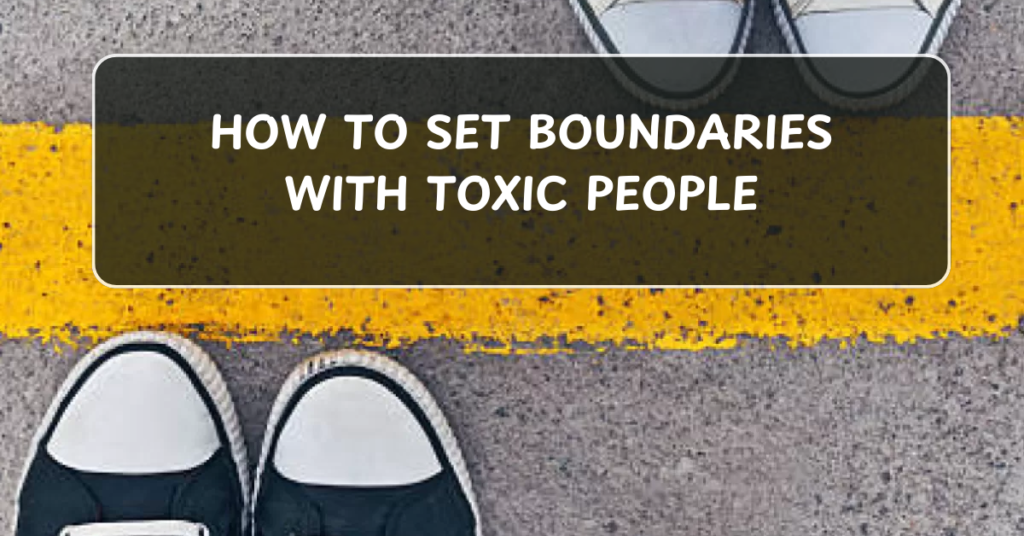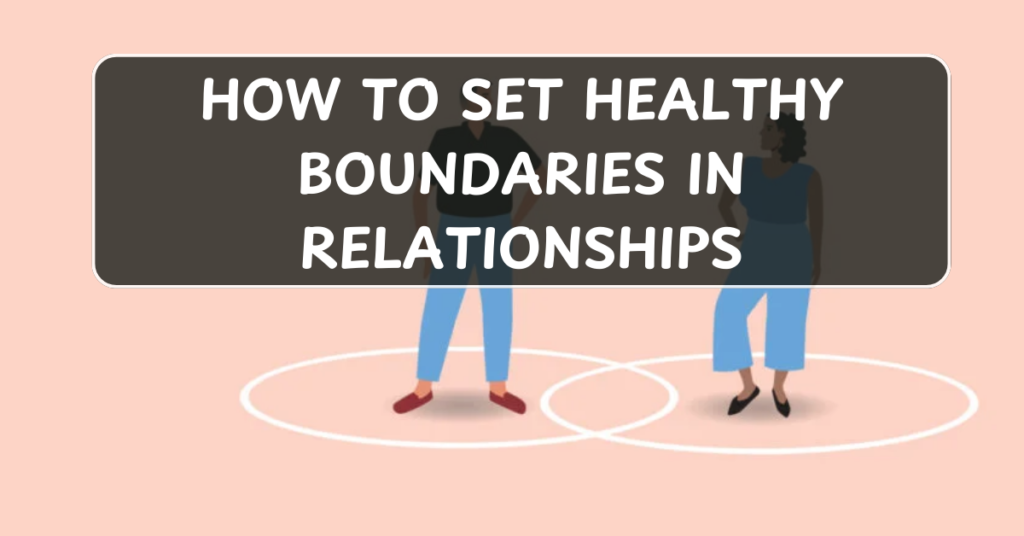
Setting boundaries with toxic people is an essential skill for protecting your mental health, emotional well-being, and overall sense of peace. Toxic individuals can drain your energy, create unnecessary drama, and lead to unhealthy dynamics that negatively impact your life. By establishing clear and firm boundaries, you can reclaim control, reduce stress, and foster healthier interactions. Here’s a step-by-step guide on how to set boundaries with toxic people.
1. Recognize the Signs of Toxic Behavior
The first step in setting boundaries with toxic people is recognizing toxic behavior. Toxic individuals often display traits such as manipulation, constant negativity, disrespect for personal boundaries, emotional exploitation, and a lack of empathy. Understanding these signs helps you identify when a boundary is needed.
- Example: A toxic person may guilt-trip you into doing something you’re uncomfortable with, or continuously criticize you without regard for your feelings.
2. Understand Your Needs and Limits
Before setting boundaries, take the time to reflect on what you need and what you’re willing to tolerate. Consider your emotional, physical, and mental limits. Knowing where your boundaries lie helps you communicate them more clearly and confidently.
- Example: If a toxic person repeatedly demands your time and energy, you might set a boundary that limits how often you’re available to them.
3. Be Clear and Direct
When setting boundaries with toxic people, clarity is key. Avoid being vague or ambiguous about what you’re willing to accept and what you’re not. State your boundaries clearly and assertively, but with respect. Toxic people may try to manipulate or guilt-trip you, so it’s important to stand firm.
- Example: “I’m not comfortable discussing personal matters with you right now,” or “I need you to respect my need for space, and I won’t tolerate being yelled at.”
4. Set Consequences for Boundary Violations
Toxic individuals often push boundaries to see how far they can go. It’s essential to have consequences in place for when they violate your boundaries. Make it clear that there will be a consequence if they continue their toxic behavior, and stick to it.
- Example: “If you continue to speak to me disrespectfully, I will need to end this conversation,” or “If you don’t respect my boundaries, I will take a break from this relationship.”
5. Stay Consistent and Firm
Consistency is crucial when dealing with toxic people. If you waver on your boundaries, they may think they can push you further. Be firm and consistent in enforcing your limits. The more consistent you are, the more likely the toxic person will start to respect your boundaries.
- Example: If a toxic person repeatedly calls you at inconvenient times, stick to your boundary of not answering calls after a certain hour.
6. Don’t Feel Guilty
Toxic people often use guilt as a weapon to manipulate or control you. When you set boundaries, they may try to make you feel guilty for asserting your needs. Remember, setting boundaries is a form of self-care and a way to protect your well-being. You have the right to prioritize yourself and your needs.
- Example: If a toxic family member guilt-trips you for not spending enough time with them, remind yourself that you deserve time for yourself and your other relationships.
7. Limit Your Exposure
Sometimes, the best way to set boundaries with toxic people is to limit your exposure to them. If direct confrontation isn’t possible or if the person continues to disrespect your boundaries, reducing the amount of time you spend with them can be an effective strategy.
- Example: Avoid engaging in long conversations with a toxic coworker or set clear time limits on how long you will interact with a toxic friend.
8. Use “I” Statements
When setting boundaries, using “I” statements helps express your feelings without sounding accusatory. This approach reduces the chance of triggering a defensive response and allows you to communicate your needs in a non-confrontational way.
- Example: Instead of saying, “You always interrupt me,” try saying, “I feel disrespected when I’m interrupted during a conversation.”
9. Expect Pushback
Toxic people are often resistant to change, especially when it comes to respecting others’ boundaries. You may encounter pushback, manipulation, or attempts to undermine your efforts. Be prepared for this and remain calm and assertive in maintaining your boundaries.
- Example: If a toxic person tries to guilt-trip you or belittle your boundaries, calmly restate your limits and remind them of the consequences.
10. Seek Support
Setting boundaries with toxic people can be challenging, especially if you’re dealing with someone close to you, like a family member or partner. It’s helpful to seek support from friends, family, or a therapist to help you navigate these situations and ensure you’re not second-guessing yourself.
- Example: Talking to a supportive friend about your experiences with a toxic person can help you gain perspective and reassurance.
11. Know When to Walk Away
In some cases, despite your best efforts, a toxic person may refuse to respect your boundaries. If this happens, it may be necessary to walk away from the relationship, especially if the person’s behavior is causing harm to your mental or emotional health. Letting go of toxic people can be one of the most freeing things you can do for your well-being.
- Example: If a toxic partner continues to disrespect your boundaries, it may be time to consider ending the relationship for your own mental and emotional safety.
Conclusion
Setting boundaries with toxic people is essential for protecting your mental health and maintaining healthy relationships. By recognizing toxic behavior, knowing your limits, and communicating your needs clearly and consistently, you can reclaim your space and peace. Remember that boundaries are not only about protecting yourself but also about teaching others how to treat you with respect. Stay firm, stay consistent, and never feel guilty for putting your well-being first!


